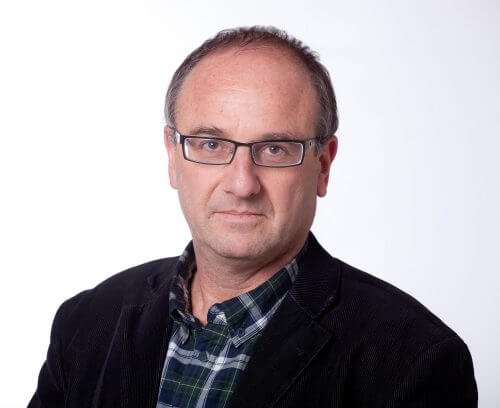The treatment, which is designed to help children with diseases that affect the respiratory tract, such as asthma, bronchiolitis in babies, chronic obstructive pulmonary disease (COPD and cystic fibrosis (CF), was developed as part of a multi-year collaboration between Ben-Gurion University and the Cincinnati Children's Hospital

BGN Technologies, the technology commercialization company of Ben-Gurion University of the Negev, reported today that researchers from the university and the Soroka Medical Center together with researchers from the Cincinnati Children's Medical Center and the University of Cincinnati in the USA have developed a new technology for breaking in and removing secretions from the airways for the treatment of children suffering from diseases that affect the respiratory system , such as asthma, bronchiolitis, chronic obstructive pulmonary disease (COPD) and cystic fibrosis (CF).
The technology is being developed in collaboration between Professor David Katushevsky from the Environmental Engineering Unit at Bo-Gurion University, Dr. Yuval Kvori from the Pediatric Intensive Care Unit at Soroka Medical Center, Professor Ephraim Gutmark from the School of Engineering and Applied Sciences at the University of Cincinnati and Dr. Iris Little from the Department of Endocrinology at the Cincinnati Children's Hospital. The technology combines flow waves and acoustic waves, a combination that enables rapid breakthrough of mucous blockages (mucus) and assistance to the patient in removing them. The technology delivers pulses of high air pressure and acoustic pulses to the airways and lungs on top of a low-pressure air stream, and aims to treat the underlying obstructive diseases of the airways and the accumulation of mucus in the small airways. The idea is to simultaneously provide a combination of low-frequency flow waves with high-frequency acoustic waves to help detach the mucus from the walls of the airways and remove it by breaking up mucus clumps.
Prof. David Katushevsky from Ben-Gurion University, noted, "Although the accumulated secretions in the respiratory tract are a central component in the pathophysiology of several diseases, there is currently no effective treatment that directly or indirectly refers to the small airways. Our colleagues at the Soroka and Cincinnati hospitals raised the medical need and combined their clinical knowledge with our technical and engineering capabilities at Ben-Gurion University and the University of Cincinnati, and together we developed this innovative solution that will allow bronchiolitis, COPD and CF patients to breathe freely."
According to Dr. Yuval Kavori, "During the winter months, the children's wards are full of children suffering from bronchiolitis, a disease characterized by increased secretions in the respiratory tract. If we had an effective and available tool that would help them clear the secretions, we could make it significantly easier for them, prevent complications and shorten the duration of their hospitalization.'
According to Dr. Iris Little, "We are particularly interested in finding treatment for diseases of the small airways because children's airways are more sensitive to obstruction by secretions. Cincinnati Children's Hospital is a world leader in the treatment of patients with cystic fibrosis, and airway clearance is an integral part of the clinical treatment of these patients."
Prof. Ephraim Gutmark from the University of Cincinnati added, "The combination of air pulses and acoustic pulses proved to be effective in a series of laboratory experiments that simulated the human airways and lungs. In light of these experiments, we are now in the process of continuing to develop the method based on a unique clinical protocol that will offer a treatment option that is superior to the treatments available today."
In 2012, Ben-Gurion University and the Cincinnati Children's Medical Center in the USA signed a multi-year cooperation agreement to address the lack of medical equipment designed specifically for children. The purpose of the collaboration is to improve the results of the treatment of children by designing medical devices that are adapted to the unique physiology and medical needs of children. The collaboration combines the technical and engineering capabilities of Ben-Gurion University with the medical expertise of Cincinnati Children's Hospital doctors. So far, hundreds of projects have been scanned as part of the collaboration, and selected projects have won a first round of funding, which is conditional on achieving specific milestones for each project. Funding was provided by Ben-Gurion University and the Cincinnati Children's Medical Center in Mashalev.
Netta Cohen, CEO of BGN Technologies, said, "This is another example of a medical device that may be effective and which grew out of our fruitful collaboration with Cincinnati Children's Hospital. We are promoting the development of this technology, which is suitable for a wide range of indications, and at the same time we are looking for a strategic partner for the continued development and commercialization of this groundbreaking invention."
